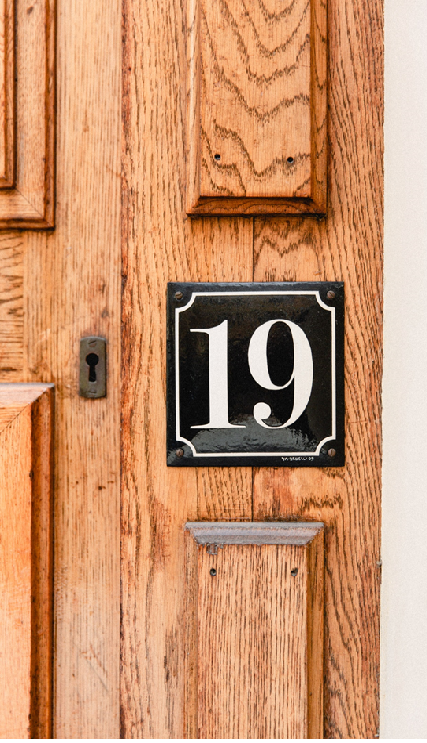Walk into any professional space in Georgetown—whether it’s a law firm off Main Street, a medical suite, or a fast-growing tech startup—and you’ll notice a quiet detail doing a lot of heavy lifting: interior office door signs. They guide clients, set the tone for your brand, and keep your workplace compliant and accessible. If your signs still look like they’re stuck in 2014, here’s what’s trending now—and how Georgetown businesses are using these trends to look sharp and stay organized.
1) Minimalist, Brand-Forward Design
Today’s door signs lean clean and modern: crisp typography, generous white space, and subtle color accents that match your brand palette. Instead of cluttered graphics, businesses are choosing a single, legible font family (plus a bold weight for names/titles) and a compact logo mark. The result? A cohesive, premium look that carries from reception to private offices and conference rooms.
Tip: Build a short brand spec for signage—approved fonts, sizes, and color values—so replacements and future expansions stay consistent.
2) Elevated Materials: From Acrylic to Metal Composites
Materials have gotten smarter and more stylish:
-
Frosted or clear acrylic with standoff mounts for a floating effect.
-
Brushed aluminum or metal laminates for a sophisticated, durable finish.
-
Wood veneers and bamboo for warmth and a boutique feel.
-
Matte finishes that reduce glare and photograph beautifully for social and recruitment content.
Georgetown firms often mix materials—e.g., a frosted acrylic plate with a brushed-metal name strip—balancing modern polish with budget.
3) ADA & Accessibility as Design, Not Afterthought
Compliance isn’t just a checkbox; it’s part of great design. Tactile lettering, Grade 2 Braille, and proper color contrast are being integrated seamlessly. Designers now plan accessibility from the start, specifying raised characters, left-justified layouts, and non-glare surfaces that hit ADA standards while still looking refined.
Tip: Ensure contrast ratio is strong (e.g., dark text on light background). It improves readability for everyone—not just those who need it.
4) Modular, Changeable Systems for Agile Teams
Team structures shift; signage should keep up. Modular door sign systems with slide-in inserts or magnetic faceplates let admins update names and titles in minutes—no reordering or waiting. This is especially popular in coworking environments and growing startups where roles and room assignments change regularly.
Bonus: Pair a permanent “room function” plate (e.g., “Conference 2”) with a changeable name/title zone to keep the door useful even when staff rotate.
5) Sustainable Choices That Still Look Premium
Sustainability matters to clients and employees. Eco-conscious Georgetown businesses are choosing:
-
FSC-certified woods and recycled acrylics.
-
Low-VOC adhesives/inks and durable finishes that extend product life.
-
Local fabrication to reduce transport impact and turnaround time.
You don’t have to sacrifice aesthetics; many green materials now match (or beat) the look and durability of traditional options.
6) Subtle Illumination & Edge-Lighting
While full backlit door signs aren’t typical indoors, edge-lit acrylic and micro-illumination are gaining traction for executive suites and high-traffic corridors. The glow is soft—not showroom-bright—enhancing visibility and adding a premium touch for client-facing spaces.
Note: Keep illumination subtle to avoid glare and ensure tactile/Braille remains readable.
7) Smart Touchpoints: QR Codes & NFC
Digital handoffs are officially mainstream. A tiny QR code or NFC tag on a door sign can:
-
Link to staff bios, calendars, or booking tools.
-
Provide room schedules, policies, or visitor Wi-Fi details.
-
Trigger help desk tickets for facilities.
Keep codes small and tastefully placed (lower corner) so they support the experience without distracting from the design.
8) Privacy & Wayfinding with Glass Graphics
For offices with glass doors, etched/frosted vinyl does double duty: privacy and branding. Pair a minimalist nameplate with a frosted band or icon system that repeats throughout the floor for intuitive wayfinding. It’s cost-effective, removable, and easy to keep consistent across suites.
9) Multilingual & Inclusive Labeling
As teams and clientele diversify, more businesses are adding bilingual door signs or icons to reduce confusion. Consider universal pictograms for mother’s rooms, wellness rooms, and quiet spaces. Inclusive labeling isn’t just courteous—it shortens wayfinding time and reduces interruptions at reception.
10) Typography that Works in Real Life
Trendy doesn’t mean tiny. The most readable door signs use:
-
Sans-serif fonts with open counters (think humanist or geometric sans).
-
Adequate letter spacing and line height.
-
Clear hierarchy: Name (largest), Title (medium), Department/Room (supporting).
Always mock up at true size and test visibility at 5–10 feet—the distance at which visitors first scan for information.
11) Cohesive Systems, Not One-Offs
The best interiors use a system: room IDs, names, amenities, and policy plaques that share a grid, materials, and mounting hardware. This makes expansion simple—order a few new inserts and they drop right in. It also keeps costs predictable for growing teams and multi-tenant spaces.
12) Installation Details That Make the Difference
Professional mounting is part of the look. Consistent centerlines, ADA-compliant mounting heights, and clean cable management for any illuminated elements keep signs aligned and safe. Small details—like matching screw caps or hidden standoffs—separate “nice” from “nailed it.”


